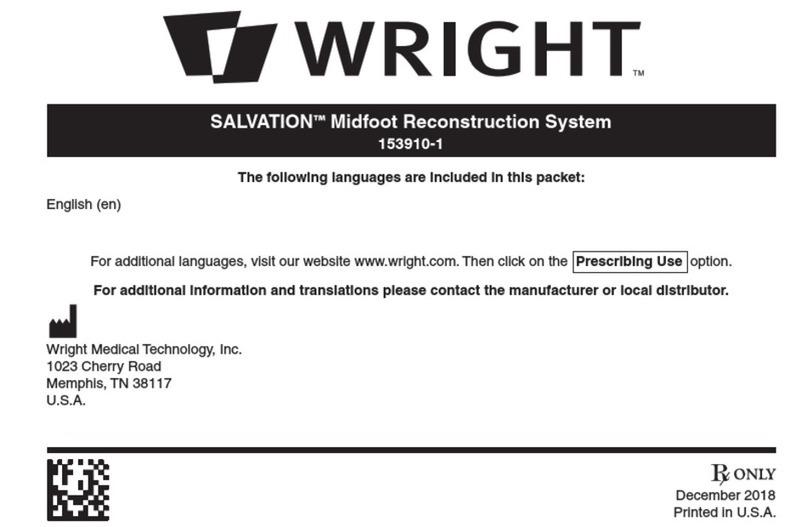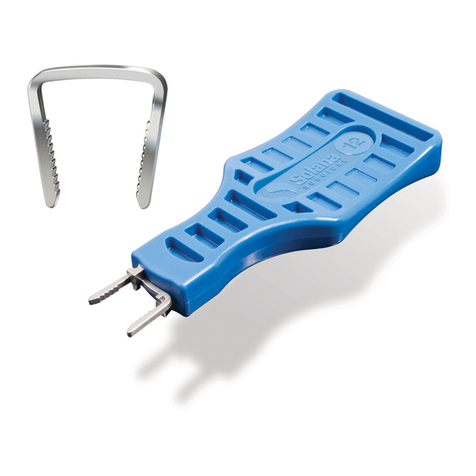
9Chapter 3 Surgical Technique
Tension is the applied to the wire by squeezing the tensioner handles. The wire
should be pulled from 70kg to 110kg, and this measure is taken by reading
where the force markings line up with the housing of the tensioner.
The tensioner should be held in place, maintaining tension, until the second
wire nut is tightened to the wire bolt. This will lock the wire under tension.
The tensioning device is then released. Tensioning the calcaneus wire stabilizes
the calcaneus while pushing it forward and compressing the posterior facet of
the calcaneus against the talus.
Next, the talar wire will be tensioned. Before tensioning this wire, the posts
should be rmly tightened to the foot ring using the 10mm wrench. The wire
bolts and wire nuts on one side of the 2mm wire need to be rmly tightened
next. With the olive (stopper) wires it should specically be noted that the
wire nut on the same side of the foot as the olive needs to be the one which is
tightened rst.
Once the wire nut or post on one side of the foot has been rmly tightened,
the tensioner is applied over the wire on the opposite side of the foot, and
moved down to contact the wire bolt. Tension is applied to the wire by squeezing
the tensioner handles. The wire should be pulled from 70kg to 110kg, and this
measure is taken by reading where the markings line up with the housing of
the tensioner. The tensioner should be held in place, maintaining tension, until
the second wire nut is tightened to the wire bolt. This will lock the wire under
tension. The tensioning device is then released. Tensioning the talar wire pushes
the talus backwards towards the posterior facet of the calcaneus, applying
compression from the opposite direction as the rst wire.
The midfoot wire is the last wire to be tensioned. Before tensioning this wire,
the posts should be rmly tightened to the footplate using the 10mm wrench.
The wire bolts and wire nuts on one side of the 2mm wire need to be rmly
tightened next. With the olive (stopper) wires it should specically be noted that
the wire nut on the same side of the foot as the olive needs to be tightened rst.
Once the wire nut on one side of the foot has been rmly tightened, the
tensioner is applied over the wire on the opposite side of the foot, and moved
down to contact the wire bolt. Tension is applied to the wire by squeezing the
tensioner handles. The wire should be pulled from 70kg to 110kg, and this
measure is taken by reading where the force markings line up with the housing
of the tensioner. The tensioner should be held in place, maintaining tension,
until the second wire nut is tightened to the wire bolt. This will lock the wire
under tension. The tensioning device is then released. Tensioning the midfoot
wire results in compression across the talaonavicular and calcaneocuboid joints.





























